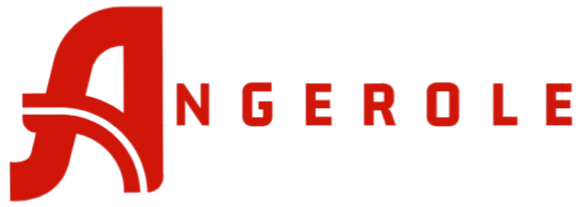BLOG
The Ultimate Guide To Sc60 Vs Self Employed Uk 80’s

Are you curious about the intricacies of the Sc60 Vs Self Employed Uk 80’s system for self-employed individuals during the 1980s? You’re not alone! This period was a time of significant change and development in the way taxes were handled for independent workers. Understanding the distinctions between Sc60 and being self-employed during this era can offer valuable insights into the evolution of the UK tax system and help modern-day entrepreneurs appreciate how far we’ve come.
In this blog post, we will explore the differences between Sc60 Vs Self Employed Uk 80’s and self-employment in the UK during the 1980s. We’ll break down the key aspects of both, uncovering the regulations and implications for individuals who operated under these classifications. By the end, you’ll have a better grasp of how these systems shaped the professional landscape for self-employed individuals and the lessons that can be applied today.
The Sc60 Scheme Explained
What Was the Sc60 Scheme?
The Sc60 scheme, also known as the Subcontractor’s Tax Deduction Scheme, was a system implemented in the United Kingdom to manage tax deductions for subcontractors in the construction industry. It aimed to ensure that taxes were collected at source, reducing the risk of tax evasion by subcontractors who might otherwise fail to declare their earnings.
This system required contractors to deduct a specified percentage from payments to subcontractors, which was then paid directly to the Inland Revenue. The subcontractor received a certificate (Sc60) as proof of the deduction, which they could use when filing their tax returns.
How Did Sc60 Impact Subcontractors?
For subcontractors, the Sc60 Vs Self Employed Uk 80’s scheme meant that a portion of their income was taxed before reaching their hands. While this ensured that taxes were paid upfront, it also posed challenges for some subcontractors who relied on their full earnings to cover immediate expenses. On the flip side, it simplified the tax filing process, as the deducted amount was already accounted for.
However, the system was not without flaws. Many subcontractors found themselves dealing with cash flow issues due to the deductions. Furthermore, the administrative burden of managing Sc60 certificates and reconciling payments added complexity to their financial management.
Lessons for Modern Contractors
The Sc60 scheme highlights the importance of effective tax management for self-employed individuals and businesses. Today, contractors and subcontractors can learn from the past by prioritizing financial planning and accounting systems to ensure smooth operations. Understanding how tax systems affect cash flow and resource allocation is essential for success.
The Self-Employment Landscape in the 1980s
Who Were the Self-Employed in the 1980s?
During the 1980s, the UK saw a surge in self-employment as individuals sought greater autonomy and control over their professional lives. This period was marked by a shift towards entrepreneurial endeavors across various sectors, from creative industries to trades and services.
Self-employed individuals were responsible for managing their taxes, which involved registering with the Inland Revenue and maintaining accurate records of income and expenses. They were also required to make National Insurance contributions, a critical aspect of their financial obligations.
Challenges Faced by Self-Employed Individuals
For those who chose the path of self-employment, the 1980s presented unique challenges. Unlike employees, self-employed individuals did not benefit from the security of a regular paycheck or employer-sponsored benefits. This necessitated prudent financial planning and the ability to weather economic fluctuations.
Additionally, navigating the complexities of tax regulations and compliance was a significant burden. Many self-employed individuals were unprepared for the administrative responsibilities, leading to potential discrepancies in tax filings and financial reporting.
Modern Implications for Self-Employment
The experiences of self-employed individuals in the 1980s underscore the importance of financial literacy and preparedness for today’s freelancers and entrepreneurs. Establishing a robust system for managing finances and understanding tax obligations is crucial for long-term success and sustainability.
Comparing Sc60 and Self-Employment
Key Differences Between Sc60 and Self-Employment
While Sc60 and self-employment both pertained to independent workers, they differed significantly in their scope and application. Sc60 was specific to the construction industry, whereas self-employment encompassed a broader range of professions and sectors.
The primary distinction lay in tax management. Sc60 involved deductions at source, while self-employed individuals were responsible for calculating and paying their taxes independently. This distinction influenced how each group approached financial planning and compliance.
Similarities in Financial Management
Despite their differences, both Sc60 subcontractors and self-employed individuals shared common financial management challenges. Both groups needed to maintain accurate records, budget for tax liabilities, and ensure compliance with regulatory requirements.
Furthermore, both faced uncertainties in income stability and the need for strategic financial planning to mitigate risks. Whether dealing with deductions or managing their tax filings, financial acumen was essential for success.
The Evolution of Tax Systems
The Sc60 scheme and the self-employment landscape of the 1980s paved the way for modern tax systems that accommodate diverse employment structures. Today, the UK tax system offers various mechanisms to support self-employed individuals, from simplified reporting processes to enhanced digital tools for financial management.
Modern Tax Considerations for Self-Employment
Current Tax Obligations for Self-Employed Individuals
In contemporary times, self-employed individuals in the UK are subject to different tax obligations than those in the 1980s. Today, they must register for self-assessment and submit annual tax returns, detailing their income and expenses. National Insurance contributions remain a requirement, contributing to state benefits and pensions.
In addition, the introduction of Making Tax Digital (MTD) has revolutionized the tax filing process, requiring digital record-keeping and online submissions. This shift aims to improve accuracy and efficiency, reducing the administrative burden on self-employed individuals.
Leveraging Technology for Tax Management
Technology plays a pivotal role in simplifying tax management for self-employed individuals. Digital accounting platforms and software streamline record-keeping, automate calculations, and facilitate compliance with MTD requirements. By harnessing technology, modern entrepreneurs can focus more on growing their businesses and less on administrative tasks.
Furthermore, online resources and educational platforms empower self-employed individuals with the knowledge and tools needed to understand and meet their tax obligations effectively.
Planning for Financial Success
Effective financial planning remains a fundamental aspect of successful self-employment. Self-employed individuals should prioritize setting aside funds for tax liabilities, budgeting for operational expenses, and establishing an emergency fund to weather economic uncertainties.
Seeking advice from financial advisors or accountants can provide valuable insights into optimizing tax strategies and maximizing financial resources. By taking a proactive approach to financial management, self-employed individuals can build a strong foundation for sustainable growth.
Conclusion
The distinctions between Sc60 and self-employment in the UK during the 1980s reflect a pivotal era in the evolution of the tax system for independent workers. Understanding these differences offers valuable lessons for today’s entrepreneurs and self-employed individuals. By recognizing the challenges and opportunities of the past, modern professionals can build more resilient and successful businesses.
For readers seeking further guidance on self-employment and tax management, exploring resources and educational opportunities can provide crucial support. Whether you’re new to self-employment or a seasoned entrepreneur, ongoing learning is key to staying informed and making informed financial decisions.
BLOG
Above-Ground or In-Ground? Your Guide to the Perfect Pool Choice

When summer’s blistering heat becomes unbearable, nothing is better than having a cool pool to dip your toes in. Public and neighborhood pools can be unsanitary and crowded, and these nuisances often inspire homeowners to install their own. Before taking the plunge to add a pool to your property, one essential decision must be made: in-ground or above-ground pool?
While both are great ways to enjoy your outdoor space and escape from the heat, they each come with a unique list of pros and cons. Factors like cost, ease of installation, and property value must be considered before choosing your pool, as both types cater to different needs and preferences.
Above-Ground Pools
Pros
For homeowners prioritising cost-effectiveness and ease of installation, above-ground pools are a common choice. Their initial purchase price is generally lower, and the setup often requires less extensive work.
Many models are simple enough to be installed as a DIY project or, at the very least, with minimal professional help. These pools offer a cheap and readily available option for backyard swimming and come in various sizes, shapes, and styles.
Cons
However, it’s important to note that above-ground pools typically have a shorter lifespan than in-ground options, lasting between 7-15 years on average. Another downside of above-ground pools is that they typically don’t add any value to your home.
No matter how much money you spent on purchasing and installing the pool on your property, they are seen as a temporary addition and is therefore not included in your home’s appraisal. Some buyers might even perceive them as a detraction from the property’s overall appeal and a headache to deal with.
In-Ground Pools
Pros
In-ground pools are a permanent landscape feature that often provides a more luxurious and integrated look. With extensive options for customisation from the overall shape and size to the depth and added features like built-in seating, lighting, and even attached spas, they can be tailored precisely to your vision.
They tend to last longer than above-ground pools, with an estimated lifespan of 10-20 years. In-ground pools can also elevate your property’s attractiveness and increase its market value, making them a beautiful, personalised, and long-lasting addition.
Cons
When it comes to disadvantages, installing an in-ground pool entails a major construction phase. First, heavy equipment will be used to excavate the area, removing a large amount of soil. Subsequently, the pool shell is constructed using materials such as concrete, vinyl, or fibreglass. This is followed by installing necessary plumbing and electrical systems, and, finally, building the surrounding deck or patio.
Be prepared for this entire process to potentially take several weeks to a few months. An important factor to consider with in-ground pools is managing all the waste from their construction. Working with a temporary dumpster rental company is often the most convenient and cheapest way to handle this waste, keeping costs lower while maintaining a safe workspace.
Conclusion
In the end, the decision between in-ground and above-ground pools depends on your circumstances and priorities. If you prioritize affordability and quick setup, an above-ground pool presents a practical and enjoyable option. For those who are ready for a larger project and prefer a permanent, personalised feature that can boost your property’s appeal, an in-ground pool may be the perfect fit. Weigh your budget, the dimensions of your yard, your long-term homeownership plans, and your vision for how you’ll use your pool to make the best choice.
BLOG
What Factors Contribute to the NYU Acceptance Rate for 2025 Applicants? A Detailed Guide!

Are you planning to apply to New York University? Wondering what steps you need to take to secure a place for yourself in an undergraduate or graduate program? A student must perform exceptionally, from earning higher grades to writing essays, to study at this marvelous institute because the NYU acceptance rate is very low due to the thousands of applicants.
According to US News, only 9% of students can secure an admission every year. The reason behind this acceptance rate is that the selection criteria of NYU are very high, and students don’t start preparation for it years before. Multiple factors contribute to the decision of the admission committee.
In this guide, we will outline the key factors that this institute considers when deciding on an application from a student, whether he is from New York or any other country. The criteria remain the same for everyone. Let’s learn about these factors so you can be a part of the lucky 9%.
Important Factors Contribute to NYU Acceptance Rate – A Guide for 2025 Applicants
Over the last ten years, the applicants to the NUY institute has doubled. This application ratio is increasing year after year, not only within the USA but also from other countries. New York University states a 10% increase in applications last year, showing how competitive it is to get admission.
When applying for a specific program, you will need to write comprehensive essays, which are an essential part of the admission process. Without having an idea about what to include and exclude in these essays, your writing will not impress the admission committee. Professional writers recommend that students get expert help for these essays, especially when they are completing their current degrees and submitting final assignments.
For pending academic tasks, such as assignments, students can contact the UK-based assignment writing services to complete and submit them promptly without compromising quality. This help can allow you to focus on your academic success, which is vital in securing admission to any program at NYU.
To prepare you for the upcoming opportunity, here are some factors that this splendid institute considers when deciding on an application. Pay close attention to every factor for the upcoming educational challenge!
1. Academic Qualifications
The reason behind the low NYU acceptance rate for master’s degrees is academic qualifications. Students face rejection because their qualifications are not up to standard. Please remember that your educational documents are the most important papers in your application process. Usually, universities analyse your academic transcripts before moving to the next steps, such as reading your essays or conducting interviews. Therefore, these documents must impress professors or admission committee members.
Undoubtedly, the last degree obtained has a major role; however, you can’t ignore the importance of previous degrees, such as A and O levels. Low marks in any of these degrees can lead to rejection. In addition to these educational degrees, your diplomas can enhance your chances of selection. They show that you are dedicated and serious about a program.
If you have obtained a diploma related to your field, don’t forget to attach it to the application. Moreover, you can also add certificates that show your expertise or skills in a specific field. All these documents will pave the way to New York University. The last thing to remember is that the admission committee also examines your performance in the subjects you studied during the degree. Performing poorly in one subject and getting excellent grades in other subjects will not go in your favour.
2. Extracurricular Accomplishments
The selection criteria of NYU aren’t different from those of the top international universities. New York University follows the same criterion as 900 other institutions do when giving admission to local and international students. All these educational hubs pay close attention to extracurricular activities and accomplishments, which are often ignored by most students. According to an article published on the website of International School Ho Chi Minh City, educational institutes happily accept those students who participate in such activities and are eager to learn.
That’s the same case with New York University. The admission committee comprehensively look at extracurricular accomplishments. For example, if you are applying to the NYU Tisch School of the Arts and don’t perform in theaters or cinemas, the chances are high that you will face rejection. Most students don’t have such accomplishments when applying to this NUY School. That’s why Tisch NYU’s acceptance rate is low; applications are increasing every year, but the acceptance ratio doesn’t increase accordingly.
Here are a few tips for more extracurricular accomplishments:
- Let’s say you are a student of media studies. There must be journalistic organisations in your area or city. You can visit it regularly or submit an application to become a member. It will shine your resume and may positively impact the admission outcome.
- Choose extracurricular activities that are most relevant to your course. For example, you can opt for a free public service if studying humanities or gender studies. It will not only broaden your horizon of looking at things, but also you will not face issues when writing an essay for the admission process.
3. Work Experience
Work experience has the potential to turn your admission application into a success. Let’s say that you graduated from a well-reputed university a couple of years ago. Since then, you have been working regularly for local and international firms. Now, you think it’s a perfect time to pursue your master’s degree and submit an application to NYU.
On the other hand, a freshly graduated student also applied to the same program. The academic excellence of both candidates is the same. Who will be given an opportunity to study at New York University? It’s you because your professional experience distinguishes you from a freshly graduated student. Work experience makes professors and the admission committee believe that you are passionate about your career and now want to enhance your skill level.
Based on the importance of work experience, MoldStud states that there is a key reason why universities give much importance to it. When an individual applies for a specific program with solid work experience, the institute believes that they will apply their knowledge to the classroom, which will be beneficial for other fellows. It increases the satisfaction level of students, leading them to say positive words about the institute.
These are professional tips for you if you are doing a job and have plans to continue your master’s degree at New York University:
- Try to secure a position, whether executive or managerial, in a well-reputed company that will verify your experience letter in case this educational institute requires it.
- Learn all the essential skills relevant to your education or job description. It will help you shine your resume and make the admission committee prefer you over others.
- Focus on networking while serving a company. This networking can open doors to new opportunities, especially when applying for higher education.
4. Letters of Recommendation
The role of letters of recommendation can’t be overlooked in the application decisions made by educational institutions. Almost every well-reputed and highly ranked institute requires you to submit recommendation letters. They don’t only check these letters just for the sake of checking, but also learn about the professor or lecturer who is recommending you. Sometimes, universities, like NYU, ask you to get recommendation letters from PhD scholars.
You will need to focus on getting a letter accordingly. It’s recommended to get a letter from a professor who is a well-known scholar and has years of experience. Some students make a mistake and get a previously drafted recommendation letter from the education institute. This approach can lead to application termination at the initial level. Always focus on getting a customized recommendation letter that mentions your name, your strengths and attitude toward studies.
Moreover, don’t request your professor to exaggerate in the letter. Exaggeration can lead to issues at a later stage of the application process. Ask your instructor to add factors that they believe only belong to you. Customisation and originality in recommendation letters will present a clear picture of your academic journey before the admission committee.
5. Essays
Essays are also an important factor to focus on when submitting an application. Usually, students are busy completing their pending academic tasks, such as writing dissertations and essays. That’s why they don’t pay much attention to these application essays and ignore the guidelines. However, this approach can lead to rejection because an essay must be of high quality to get admission.
Some professionals believe that essays are the hidden reason behind the low NYU acceptance rate. The schools affiliated with NYU pass on instructions about these essays, such as what aspects to explain in detail and what structure would be perfect for a specific essay. You need to remember that every school has separate guidelines for essays; therefore, you will craft one accordingly.
What Is NYU’s Acceptance Rate?
As previously mentioned, the acceptance rate for New York University is 9%. The number of candidates is increasing every year; however, there is no significant increase in the acceptance rate. NYU is one of the most competitive institutions, where admission requires years of preparation. You need to appear in one of these exams, the ACT and SAT, to increase your chances of securing a position. Some students don’t get high marks in these exams, while others lack in professional work experience. That’s why the acceptance rate isn’t increasing as expected.
What is NYU’s Acceptance Rate by Major?
The NYU acceptance rate by major for 2028 was only 8%. New York University states that 118,000 applied for that year, showing how eager students are to study at this institution. Due to minor and major flaws in the application, most students don’t get a chance. This rate can vary according to the campus because this institute has three campuses in New York, Abu Dhabi, and Shanghai.
What is NYU’s Acceptance Rate for International Students?
The NYU institute doesn’t examine applications based on the identity of applicants. Every year, thousands of students from the USA and other countries apply for undergraduate and master’s degrees at New York University. The admission committee reviews every application and releases a press note about the ratio of successful applications. This press note doesn’t contain information about local and international students and their acceptance ratio. The acceptance rate at NYU can vary from school to school. Sometimes, we see a minor spike in acceptance and vice versa, the next year.
Why is NYU’s Acceptance Rate So Low?
NYU has been focusing on maintaining quality in education and research for years. It adopts a strict admission policy for national and international students. A student will only be admitted if he has excellent academic qualifications and higher extracurricular accomplishments. The admission committee also checks whether you have work experience or not.
Letters of recommendation also play an important role in the application process. Plus, a student also has to take an exam, such as the ACT or SAT and get good marks. Ensuring all these factors are met may help a student secure a place. However, most individuals fail to meet this criterion and don’t get admission.
Conclusion
You must have an idea now why the NYU acceptance rate is low for local and international students. A student needs to follow every guideline during the application process, from providing recommendation letters to writing admission essays. The admission outcome is heavily dependent on how well-written and structured these essays are. You will need to spend days on curating perfect essays as you will be seeking guidance from your seniors and getting help from your fellows.
Writing these essays may become challenging for you if you are working on your assignments to earn your degree. Working on these academic tasks will not be manageable for you, and even if you manage them, the quality of your writing will decrease. That’s why we recommend you get online assignment writing help to complete your assignments so that you can submit them on time and earn your degree, to continue your academic journey.
Author Bio
David Archer is an experienced assignment writer with expertise in completing assignments for undergraduate, graduate, and PhD students. He earned his Master’s degree from the University of Newcastle in 2014. Since then, he has been a dedicated academic writer, helping students to achieve excellence.
BLOG
Trending Plumbing Innovations: What Homeowners Need to Know

Introduction
In an age where efficiency and sustainability reign supreme, the plumbing industry has made remarkable strides to keep pace with modern demands. Homeowners can now access cutting-edge technologies that conserve resources and enhance their homes’ functionality. Understanding these plumbing innovations can help homeowners make informed decisions when upgrading their systems, thus improving their quality of life and boosting their property’s value.
Smart Plumbing Systems
Innovative plumbing systems are transforming how we interact with water in our homes. Integrating Internet of Things (IoT) technology, these advanced systems enable remote control and monitoring of real-time water usage. With brilliant showers and faucets, homeowners can adjust settings or receive alerts about potential leaks through their smartphones, maximizing water efficiency and preventing wastage. While the appeal of DIY solutions might be tempting, the sophistication of these systems necessitates the skills of professional plumbers. Their expertise ensures that installations are done correctly, mitigating the risk of costly errors.
Eco-Friendly Fixtures
As environmental considerations increasingly influence consumer choices, eco-friendly fixtures have surged in popularity for their water-saving capabilities. Low-flow toilets, motion-sensor taps, and water-efficient showerheads help minimize water consumption without sacrificing performance. These advancements reduce energy costs and play a significant role in protecting the environment, making them a smart choice for today’s homeowners. To achieve the best outcomes, these devices must be set up by experts who can guarantee effective integration with current systems.
Tankless Water Heaters
Tankless water heaters represent a significant shift from traditional heating methods. They offer instantaneous hot water without the need for bulky storage tanks. These systems only provide hot water when needed, reducing energy usage and creating more space. The durability and performance of a tankless water heater significantly rely on careful installation. Engaging a skilled plumber guarantees the unit is fitted correctly, preventing operational issues and enhancing energy savings over time. This professional touch is essential to capitalize on these heaters’ many benefits.
Leak Detection Technology
Contemporary methods for detecting leaks are pivotal for homeowners focused on safeguarding their residences against water harm. Sophisticated sensors installed within plumbing systems can identify leaks quickly, alerting homeowners before minor issues escalate into major problems. These technologies can save significant amounts of money on repairs and foster a proactive approach to maintenance. Employing professionals to set up and maintain these systems can prevent mishaps, ensuring the system runs efficiently and continues to protect your home.
Conclusion
The evolving landscape of plumbing innovations presents homeowners with remarkable opportunities to enhance their homes’ efficiency and sustainability. Today’s technologies offer significant benefits, from innovative systems to eco-friendly fixtures and tankless water heaters. However, the complex nature of these innovations underscores the importance of relying on professional plumbers for installation and maintenance. By entrusting these tasks to skilled professionals, homeowners can ensure their plumbing systems operate optimally, maintain value, and contribute positively to a sustainable future.
-

 BLOG10 months ago
BLOG10 months agoTacompton files: A Chronicle of Satire, Community
-

 TECH11 months ago
TECH11 months agoBunkr Album: An Ultimate Guide an Everything You Need to Know
-

 TECH11 months ago
TECH11 months agoSai Manimanoj Intellisoft Technologies: A Deep Dive
-

 NEWS11 months ago
NEWS11 months agoWoodlake Condominiums News: Latest Updates You Need to Know
-

 FASHION11 months ago
FASHION11 months agoColor Lecrino: A Warm and Versatile Hue for Modern Design
-

 BLOG11 months ago
BLOG11 months agoManuela Escobar: The Private Life of Pablo Escobar’s Daughter
-

 NEWS12 months ago
NEWS12 months agoDorsten Vs Fresno Pollution Coparament: Complete Guide
-

 NEWS11 months ago
NEWS11 months agoShari Ann Chinnis Indianapolis: Understanding the Viral TikTok Story
